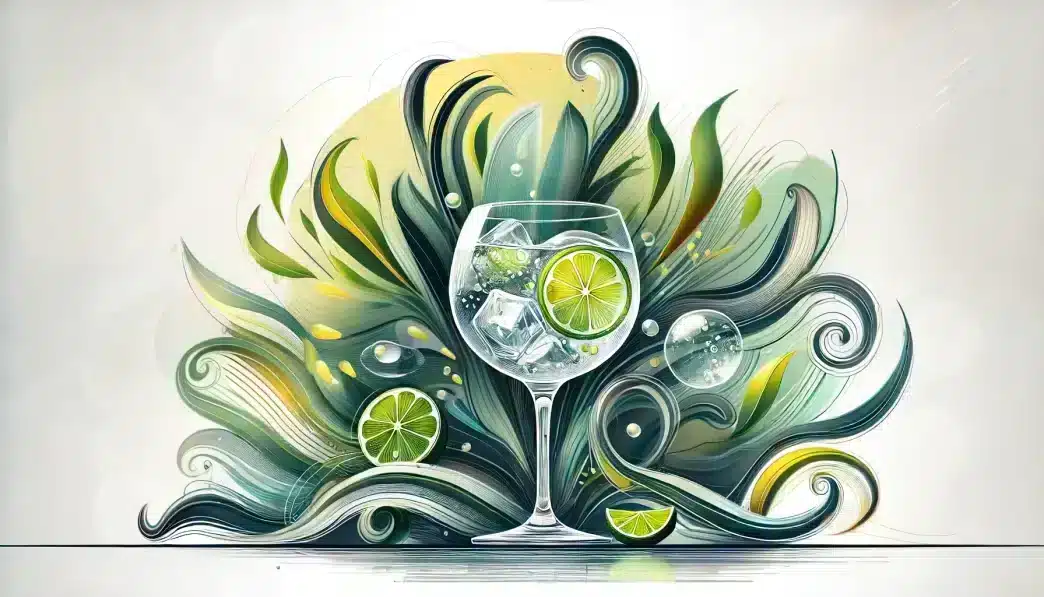What is National Gin and Tonic Day?
National Gin and Tonic Day is celebrated every year on April 9 in the United States. This day is dedicated to honoring the classic gin and tonic cocktail, known for its crisp, refreshing taste and deep-rooted history. Originally created as a medicinal drink during the British colonial era, it has since become a staple in bars, restaurants, and homes worldwide. National Gin and Tonic Day encourages enthusiasts to enjoy this timeless beverage while exploring its variations and unique flavor combinations.
Beyond its status as a popular cocktail, gin and tonic has a strong cultural significance. From classic London dry gins to modern botanical-infused versions, the drink continues to evolve. Whether served with a lime wedge, aromatic herbs, or artisanal tonic water, it remains a favorite among mixology lovers. This day provides an opportunity to appreciate not only the drink itself but also the craftsmanship behind gin distillation and cocktail creation.
History and Origin
The origins of the gin and tonic date back to the 19th century when British colonial officers in India needed a way to consume quinine, a compound used to prevent malaria. Tonic water contained quinine, but its bitterness made it difficult to drink. By mixing it with gin, the officers created a more palatable solution that eventually gained popularity beyond its medicinal use. Over time, the gin and tonic evolved into a sophisticated cocktail enjoyed worldwide.
National Gin and Tonic Day was established to recognize this classic drink and celebrate its influence on cocktail culture. Although the exact founding details of the observance remain unclear, it has gained widespread recognition among gin enthusiasts, bartenders, and distilleries. Today, the day serves as a reminder of gin and tonic’s rich history while encouraging people to explore new recipes and variations.
Who Observes National Gin and Tonic Day?
- Gin lovers: Cocktail enthusiasts who appreciate the balance of gin and tonic use this day to indulge in their favorite variations.
- Bars and restaurants: Establishments offer special promotions, tastings, and unique gin and tonic combinations to attract patrons.
- Distilleries: Gin producers often organize tours, tastings, and limited-edition releases to celebrate the day.
- Culinary and cultural organizations: Mixology classes, history talks, and cocktail workshops highlight the drink’s evolution and significance.
- General public: Many people take the opportunity to experiment with gin and tonic recipes at home or share their favorites online.
Slogans and Themes
National Gin and Tonic Day revolves around themes of tradition, craftsmanship, and the joy of mixology. It encourages people to appreciate both the simplicity and complexity of this iconic drink. Popular slogans include “Cheers to the Classic Gin and Tonic,” “Mixing Tradition with Taste,” and “A Toast to Timeless Refreshment.” The observance also highlights the evolution of gin, from its medicinal origins to its modern-day status as a refined cocktail ingredient.
Colors, Symbols, and Patterns
Colors
- Green represents the juniper berries used in gin production.
- Clear symbolizes the clarity of the gin and tonic beverage.
- Citrus yellow reflects the common use of lemon or lime garnishes.
Symbols
- The highball glass is the traditional vessel for serving gin and tonic.
- Juniper berries are an essential botanical in gin distillation.
- Citrus slices are a common garnish that enhances the drink’s flavor.
Patterns
- Bubbles represent the effervescence of tonic water.
- Botanical illustrations highlight the natural ingredients used in gin production.
- Colonial-era designs pay homage to the drink’s historical roots.
How to Celebrate National Gin and Tonic Day
- Host a tasting party: Invite friends to sample different gins and tonics while experimenting with garnishes.
- Visit a local distillery: Explore the gin-making process and discover unique small-batch varieties.
- Try new recipes: Modern twists on the classic include flavored tonics, fresh herbs, and infused gins.
- Attend a mixology class: Enhance bartending skills by learning about the history and preparation of gin and tonic.
- Share on social media: Post your gin and tonic creations using hashtags like #NationalGinAndTonicDay or #G&TDay.
Most Used Hashtags
- #NationalGinAndTonicDay
- #GinAndTonic
- #G&T
- #GinLovers
- #CocktailHour
Why is National Gin and Tonic Day Important?
National Gin and Tonic Day is more than just an excuse to enjoy a drink;it’s a celebration of history, craftsmanship, and the evolving world of cocktails. The day highlights the artistry behind gin production and mixology, recognizing the dedication of distillers and bartenders. It also serves as a moment to appreciate the drink’s origins, from its role as a colonial-era remedy to its status as a globally cherished cocktail.
While many embrace the occasion as a lighthearted celebration, some critics point out concerns regarding the promotion of alcohol consumption. Responsible drinking and moderation remain essential aspects of enjoying the day, and many campaigns focus on drinking mindfully while savoring the flavors and history of gin and tonic. Regardless of perspective, National Gin and Tonic Day sparks conversations about the cultural impact of classic cocktails and the evolving trends in the spirits industry.
Features
- Food and Drinks
